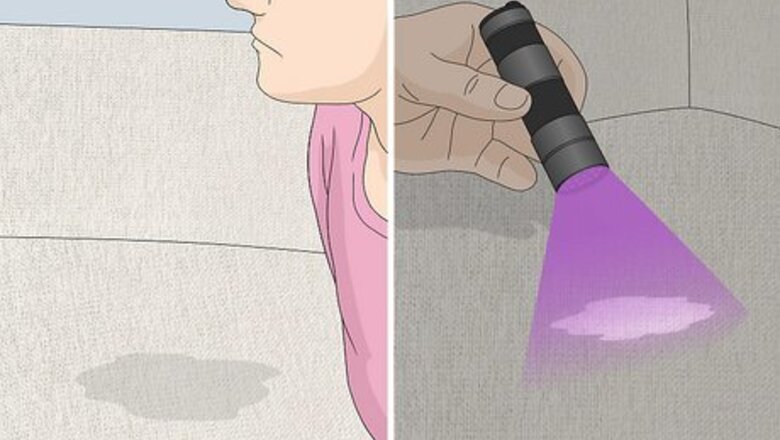
views
- Soak up as much urine as possible with a rag or paper towels, then blot over the area with a mixture of water and dish soap. Let it dry and repeat the process to clean the stain.
- Spray an enzymatic cleaner on the stain to remove any lingering odors. Let it sit for 15 minutes, then blot up any excess solution with paper towels.
- Alternatively, spray the area with a mixture of equal parts vinegar and water. Sprinkle 2 tsp (12 g) of baking soda over the solution and wait for it to dry before vacuuming the area.
Removing the Urine
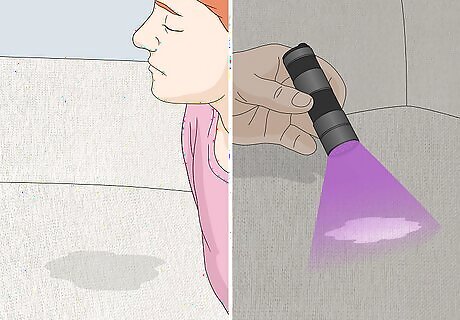
Find the soiled spot as quickly as possible. Pet urine is a lot harder to get out once it dries, even more so if it soaks into the wooden frame of your couch or other pieces of furniture. The most important thing is to find the source of the smell as soon as possible. Scan your furniture for stains, follow your nose toward the source of the smell, or use a blacklight to find the spot. Even if the urine stain isn’t fresh, you’ll likely be able to find it with these same methods.
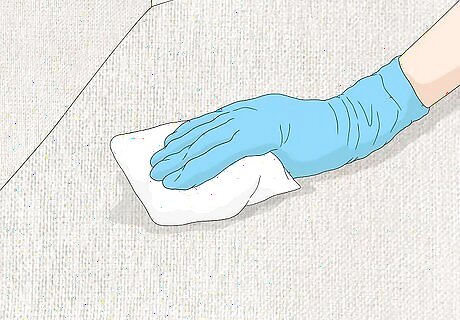
Soak up the urine with paper towels. The most important thing is to remove as much urine as possible from your furniture. Use an absorbent material such as paper towels or newspaper to soak up the urine. For sanitary purposes, wear a pair of disposable gloves as you work. If the urine stain is old, soak the area with warm water that has a few drops of dish soap in it. Place the soaked newspaper or paper towel where you'd like your pet to urinate, such as on a pee pad or outside. This is a positive way to help let them know where to do their business.
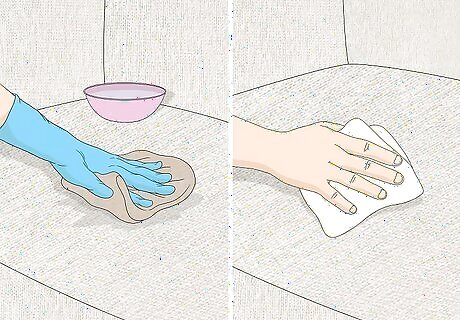
Rinse the area with cool water and blot to dry. Soak a rag or some paper towels with cool water and gently rinse off the area where the stain is. Avoid scrubbing too vigorously, as this can cause the stain to actually set even deeper into your upholstery, Then, use a dry towel or rag to blot the area completely dry. For old urine stains that have already completely dried, you might have to wet and blot the area multiple times to get the stain out. Another option is to use a wet-dry vacuum on the stain. Avoid using a steam cleaner to remove pet urine from furniture since it can actually cause the urine to set even deeper into the upholstery.
Using an Enzymatic Cleaner
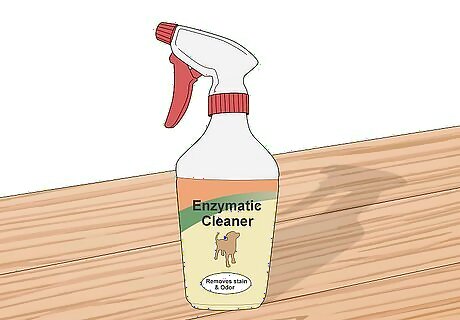
Get an enzymatic cleaner specifically for pet urine. Enzymatic cleaners work on a molecular level to break down stains and remove odors. They’re efficient in completely removing stains and odors rather than just covering them up. When you make your selection, choose a cleaner that’s specifically made for dealing with pet urine and corresponds with the type of material (like leather or microfiber) you’ll be spraying it on.
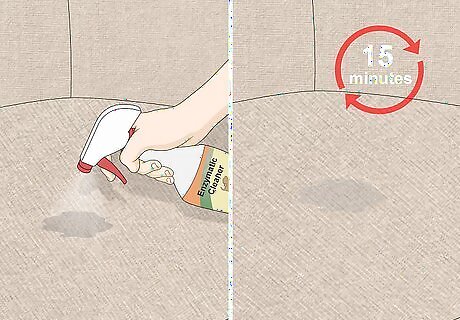
Soak the area with the enzymatic cleaner and let it sit for 15 minutes. Many enzymatic cleaners come in handy spray bottles, though some just come in jugs. Spray a liberal amount of cleaner onto the stain, or carefully pour it from the jug. Read the instructions on your specific product to know how much you should be applying. Leave it to sit for 10 to 15 minutes so that it has enough time to take effect. Cover the area you’re cleaning with something like an overturned laundry basket or some aluminum foil. This helps keep pets and other people in your house from disturbing the area.
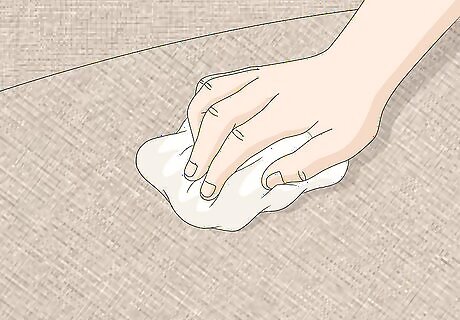
Blot up excess cleaner and let the area dry. Take a paper towel or clean rag and use it to blot up the enzymatic cleaner after the 15 minutes are up. Continue to blot the area until it’s mostly dry, then leave it to air dry. This can take a couple of days, especially if the stain is rather large. You may need to repeat the process of applying enzymatic cleaner and blotting the area if the urine smell doesn’t go away immediately.
Using Baking Soda & Vinegar
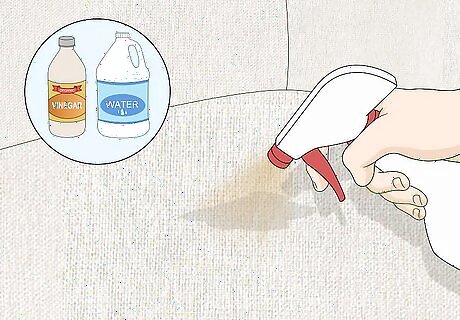
Spray a mixture of equal parts vinegar and water on the stain. Once you’ve done an initial cleaning with just water and blotted the area dry, go back in with a vinegar solution to help further remove the stain and any lingering odors. Mix equal parts white vinegar and water in a spray bottle and shake it to make sure everything’s equally combined. Then, spray a liberal amount on your upholstery where the stain is. Soak up as much urine as possible from the upholstery before you use any cleaning agent. Only use white vinegar instead of something like apple cider vinegar or wine vinegar.
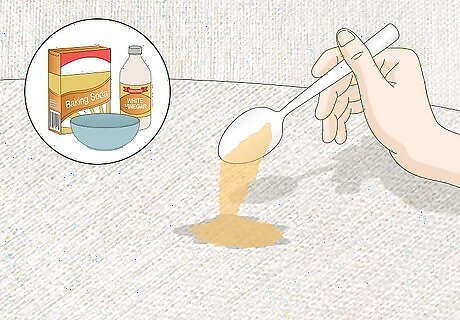
Sprinkle 2 tsp (12 g) of baking soda on the vinegar-soaked stain. Baking soda will help absorb the moisture and any lingering odors. The baking soda-vinegar mixture will start to fizz when they combine, which is completely normal. Let the mixture sit for a few minutes to give it enough time to activate. Be aware that strong chemical odors, including vinegar, can encourage some dogs and cats to reinforce scent marks and continue peeing on your furniture. To help avoid this, make sure to properly dilute the white vinegar with water and use baking soda to further eliminate any odors. Instead of using vinegar, another option is to sprinkle baking soda over the stain, then pour a mixture of ¼ cup (59 ml) of 3% hydrogen peroxide and 1 tsp (5 ml) of liquid dish soap over the area.
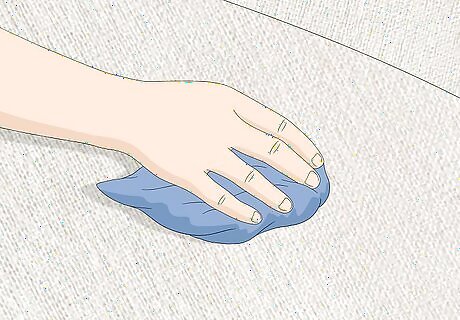
Blot the area dry with a towel. Once a few minutes have passed, take some paper towels or a clean rag and blot up as much of the mixture as possible. Another option is to go in with a vacuum to clean up the solution once it has completely dried. If the odor still remains or if the stain isn’t completely gone by the time you’re done, you might have to repeat this cleaning process once more. To help remove the smell of urine from the room, place bowls of white vinegar or baking soda around the room and near where the odor is the strongest. These are both natural deodorants that will absorb the urine smell within a few hours.
Preventing Pets from Peeing on Furniture
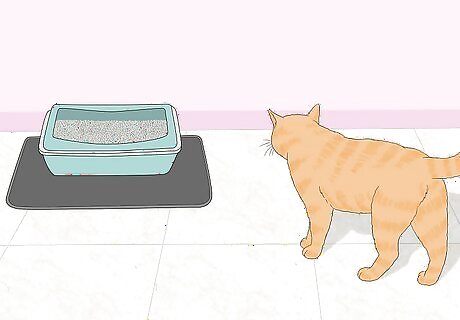
Place cat litter boxes in an easily accessible place. Set out 1 litter box for every cat you have plus an additional one. Make sure that the litter box is in a place that’s easily accessible to your cat and not near any noisy or heat-radiating appliances, such as a heater or washing machine. Be sure to also place the box far away from their food and water. The litter box should be big enough for your cat to be able to turn around comfortably without touching the sides. Note that scented litter can be off-putting to some cats and cause them to urinate in other places outside of their litter box. If you want to reduce odors, sprinkle some baking soda on the bottom of the litter box, then pour in an unscented litter.
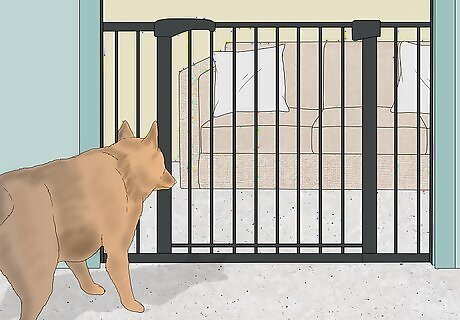
Block off areas where you don’t want your dog to pee. Your dog may be peeing on your furniture as a means to mark their territory or because they’ve formed a habit of urinating in that specific spot. Block off the area so that you’re dog can’t access it, such as by putting up pet gates to block off certain rooms. If this isn’t possible, retrain your dog by using that space for different purposes, such as by playing with them there or giving them treats. Take your dog outside or to a designated bathroom spot as soon as you notice signs that they’re going to pee, like barking or scratching at the door, sniffing around or circling, and restlessness. When you’re not able to watch your dog closely, put them in a crate (if they’re crate-trained).
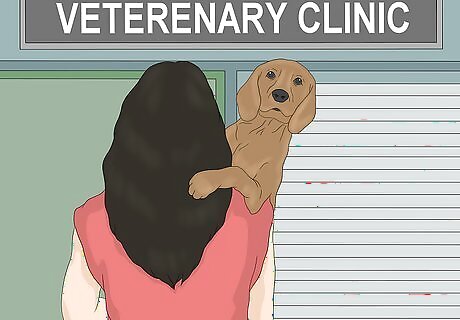
Take your pet to the vet if they continue to urinate around the house. It’s possible that a medical condition, stress, or anxiety could be the reason your cat or dog is urinating in unwanted places. If the behavior continues, take them to your local vet for a check-up. They may be able to prescribe your pet certain medications to help.




















Comments
0 comment